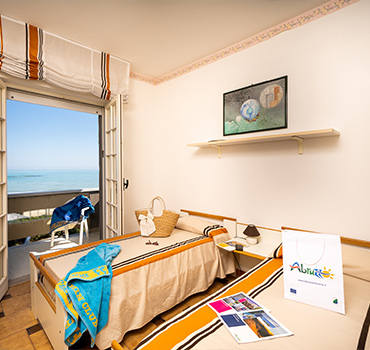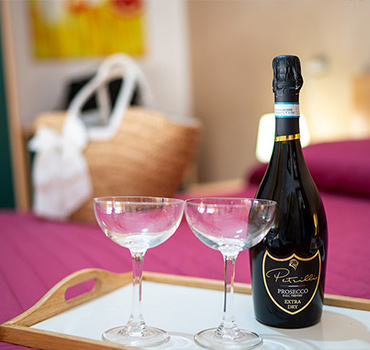NEARBY
Places to visit for those who want to travel.
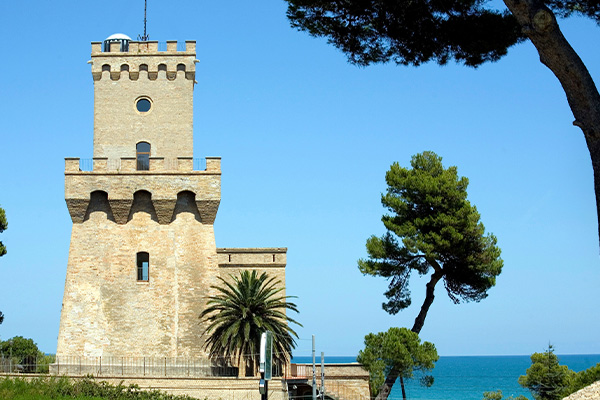
CERRANO TOWER
The Cerrano Tower is one of the ancient coastal towers of the Kingdom of Naples, it is located on the Adriatic coast, in the province of Teramo, between Silvi and Pineto. It is one of the few remaining intact examples of the dense network of coastal fortifications of the Kingdom of Naples, which had the function of repelling the frequent attacks of Turks and Saracens coming from the sea. Torre Cerrano, whose construction dates back to 1568, owes its name to the stream of the same name, which descends from the hills of Atri and whose mouth is located 500 meters south of the tower, in the municipality of Silvi. The upper and lateral parts of the Tower are a more recent addition, built in the last century by the families who used it before the tower became the heritage of the Province of Teramo in 1981. According to the historians Strabo and Sorricchio, the archaeological remains in front of the tower are those of the port of the ancient Roman colony of Hatria, today's Atri, a stopover destination for ships loaded with cereals coming from Puglia and Sicily and a loading place for wines locals headed to Greece and towards Aquileia in the north of the Hatriaticum sea.
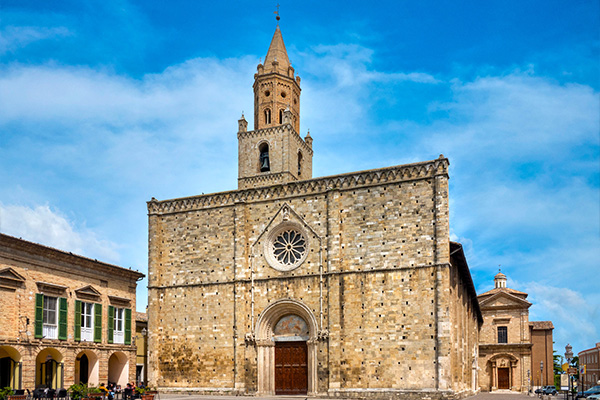
CITY OF ATRI
An enchanting city of art close to the Teramo coast, Atri has very ancient origins (7th-5th century BC). It was an important colony in Roman times, suffered barbarian invasions and foreign dominations during the Middle Ages, and then was definitively "reborn" under the control of the lords of Acquaviva. And it is in the center of the town that the charm of this long history continues to reveal its evocative power even today. Historic monuments and buildings, churches, museums, suggestive views, these are the many pieces of the splendid mosaic that Atri offers to its many visitors. In Piazza Duomo stands the Cathedral of Santa Maria Assunta dating back to 1285 and recently restored. Its four 13th-century portals are of notable workmanship, while the three-nave interior features a square apse with a wonderful cycle of frescoes by the 15th-century Abruzzo artist Andrea Delitio. The adjoining museum preserves precious relics: painted majolica, crosses and ivory and silver crosiers.
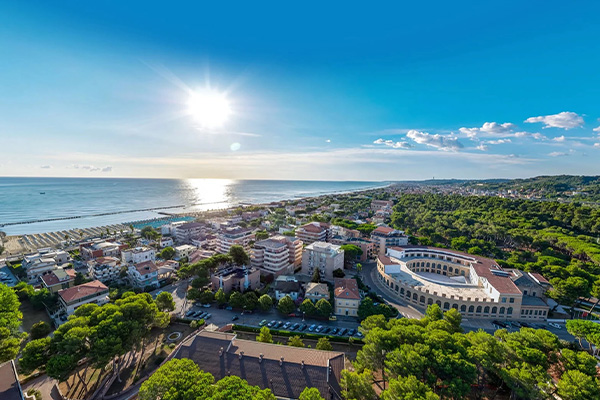
CITY OF PESCARA
A modern city bordered by the Adriatic and crossed by the river of the same name, Pescara was born from the merger in 1927 of two towns (Castellammare Adriatico and Pescara), located on opposite banks of the river. A dynamic and contemporary city, it represents the Abruzzo reference center for commerce and services. The coast, large and equipped, with establishments and restaurants on the sea and with a long cycle path, is very popular not only in the summer season. It was the birthplace of the patriot Gabriele Manthonè (1764-1799) and the poet Gabriele D'Annunzio (1863-1938). Interesting archaeological finds have come to light in its territory, including a Neolithic village under Colle Orlando, dating back to around 6000 years ago. At the time of the Roman Empire it took the name of "Ostia Aterni", already then a center of trade with Adriatic locations and with Dalmatian ones beyond the sea. Due to the abundance of its waters in the early Middle Ages it was called "Piscaria", a name which later became Pescara. Modern in its urban and architectural layout, it has recently been defined as the city of the two bridges - del Mare and Flaiano - which design an original skyline. Inaugurated in 2009, the Ponte del Mare has become a true symbol of the city...
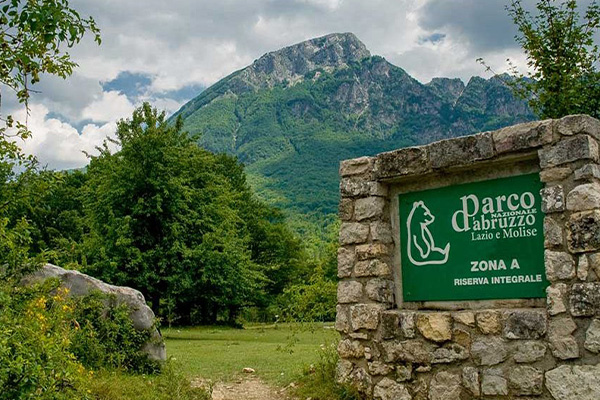
ABRUZZO, LAZIO AND MOLISE NATIONAL PARK
The territory of the Abruzzo, Lazio and Molise National Park is mainly made up of a set of mountain chains with an altitude between 900 and 2,200 m above sea level. The mountains of the Park present a varied and interesting landscape in which rounded peaks, typical of the Apennines, alternate with steep slopes with a typical Alpine appearance. The central area of the Park is crossed by the Sangro river, into which various streams flow; in the outermost area, however, the waters of the Giovenco, Melfa, Volturno and other rivers flow. Due to the karst phenomenon, the waters often flow in underground beds and form springs downstream, sometimes even outside the Park territory. Inside the Park there are two lake basins: the artificial lake of Barrea fed by the Sangro river and the natural lake Vivo. The latter is located in a depression of tectonic origin located at approximately 1,600 m above sea level. Being fed partly by its own springs and partly by melting snow, its dimensions follow seasonal trends.
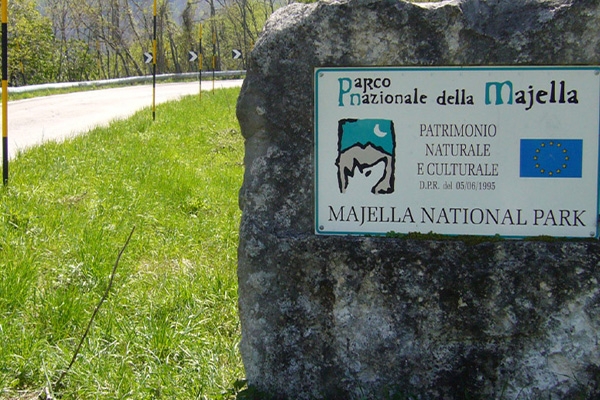
MAJELLA NATIONAL PARK
An entirely mountain park, the Mother Mountain of Abruzzo in the most impervious and wildest part of the Central Apennines, the “Sacred” Mountain, because it is pervaded by a monumental sacredness that has always inspired profound religiosity and for this reason so dear to Pope Celestine V and the hermits. The Park of the Wolf, of the Bear, of the vast high altitude plateaus and of the wild and imposing canyons, but also the Park of the Hermitages, of the Abbeys, of the dry stone huts, of the wonderful historical centers of the Municipalities that are part of it . A Park that awaits you with all the warmth, kindness and hospitality typical of the strong and gentle Abruzzo. The Park, whose altitude ranges from 130 to 2793 m of Mt. Amaro, is made up of carbonate reliefs that exceed or come close to 2000 m, Majella, Morrone, Porrara, Pizzalto and Rotella, separated by valleys and karst plateaus. From a geological point of view, the Majella is the most unique massif of the Apennines. Its limestones were mostly deposited starting 100 million years ago on the bottom of a tropical sea rich in life, as demonstrated by numerous fossils.
GREEN FLAG PEDIATRICIANS

BLUE
FLAG

THE SAILS OF
LEGAMBIENTE
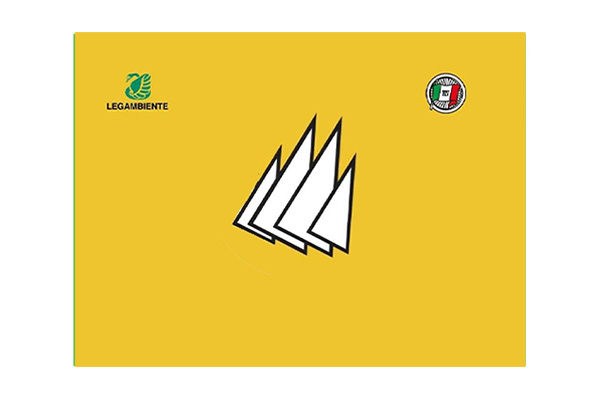
PROTECTED
SEA AREA


 IT
IT ČE
ČE DE
DE FR
FR